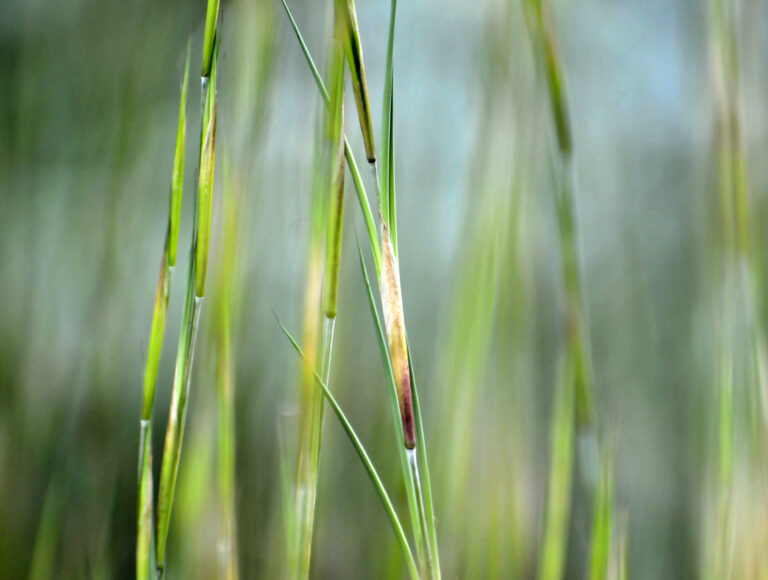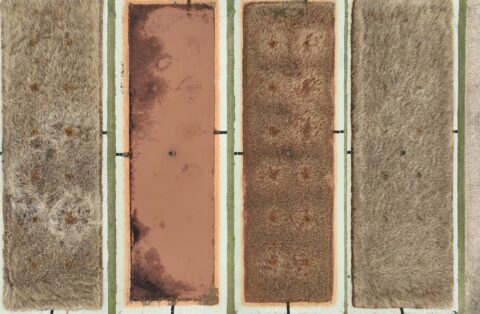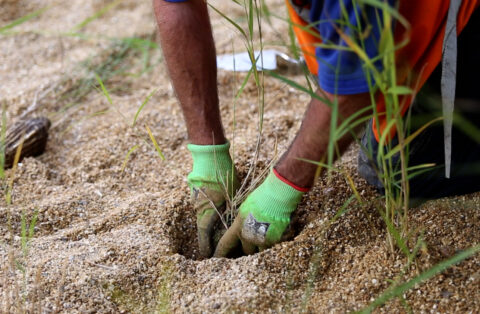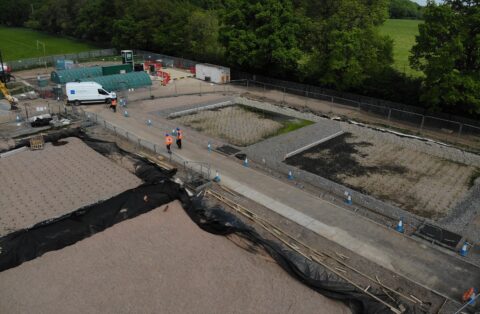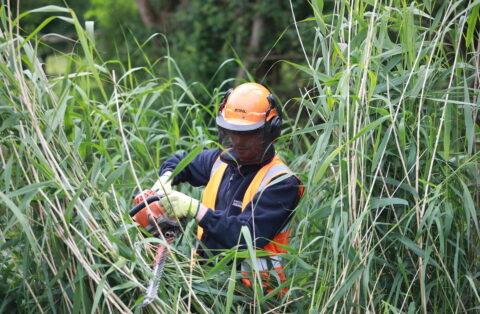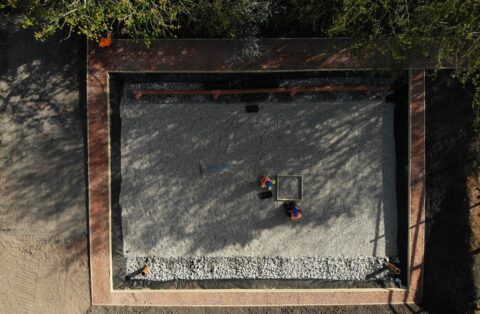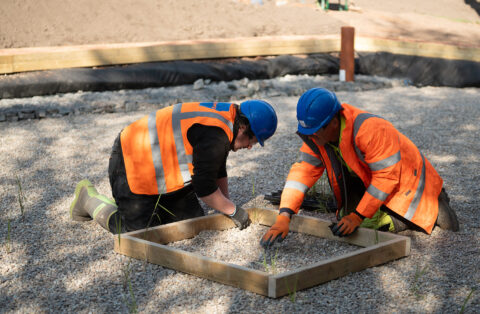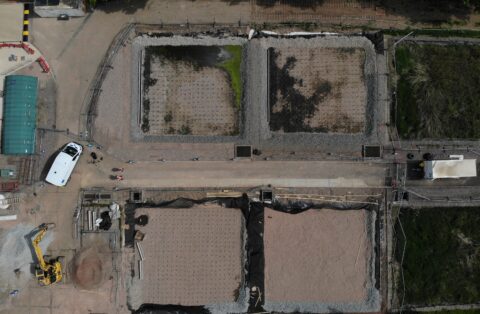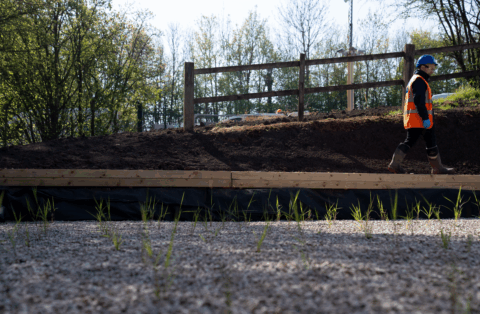Tapping the potential of reedbeds for environmental management and sustainable wastewater treatment
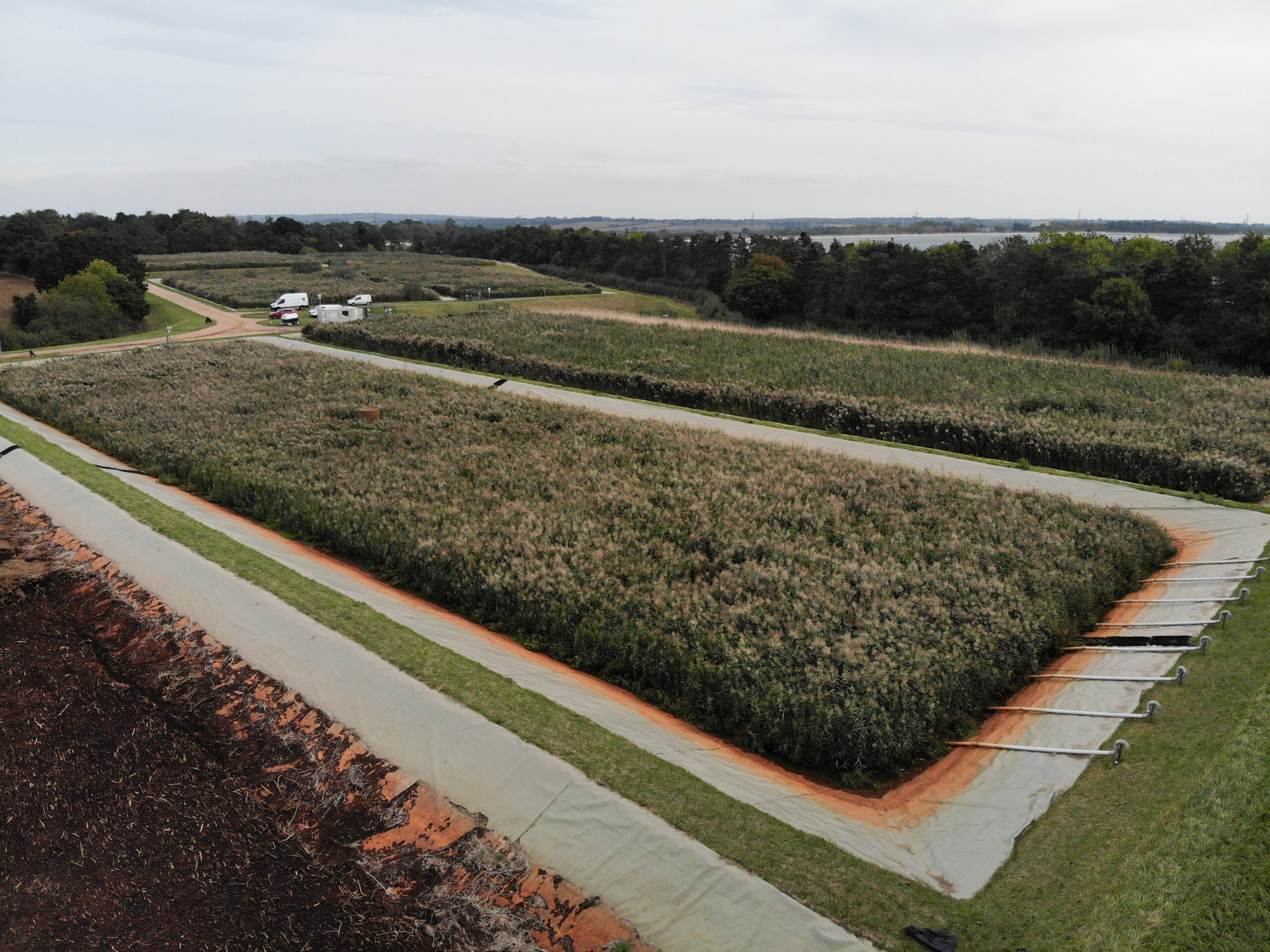
Introduction
We have an urgent need to reduce potentially harmful sewage spills and protect the environment. The Government, through its Storm Overflows Discharge Reduction Plan, expects companies to incorporate nature-based solutions into their strategies to tackle overspills; prioritising biodiversity, carbon reduction and ecological health. This, combined with the effects of climate change, has created an increasing demand for low-carbon, environment-enhancing programmes that will increase flood resilience and enhance water security, in addition to maintaining wastewater control measures necessary to achieve regulatory compliance. Reedbed systems provide a proven, nature-based solution to reduce hydraulic overload, and play a crucial role in achieving environmental objectives on wastewater treatment sites and in the wider catchment.
What are reedbeds?
Reedbeds are natural or constructed wetland ecosystems characterised by the predominance of reed plants. Reedbeds are created intentionally for water treatment and environmental restoration. Their ability to provide a wide range of ecosystem services makes reedbeds an increasingly prevalent method for sustainable environmental management as they play a crucial role in providing water purification, water attenuation, wildlife habitat and carbon sequestration. They are most commonly implemented as natural filtration systems for the neutralisation of foul water, but they are gaining popularity for urban drainage and natural flood management.
Reedbeds for wastewater processing
On wastewater treatment sites, reedbeds offer a highly effective, environmentally-restorative and low-cost solution for wastewater processing. They are usually applied as a tertiary treatment to remove nitrogen, phosphorus and other contaminants that are still present in final-stage effluent after sewage has been through primary treatment processes such as settling, screening and sludge removal. However, they can provide a secondary treatment alternative for smaller sewage treatment works in areas with a low population density.
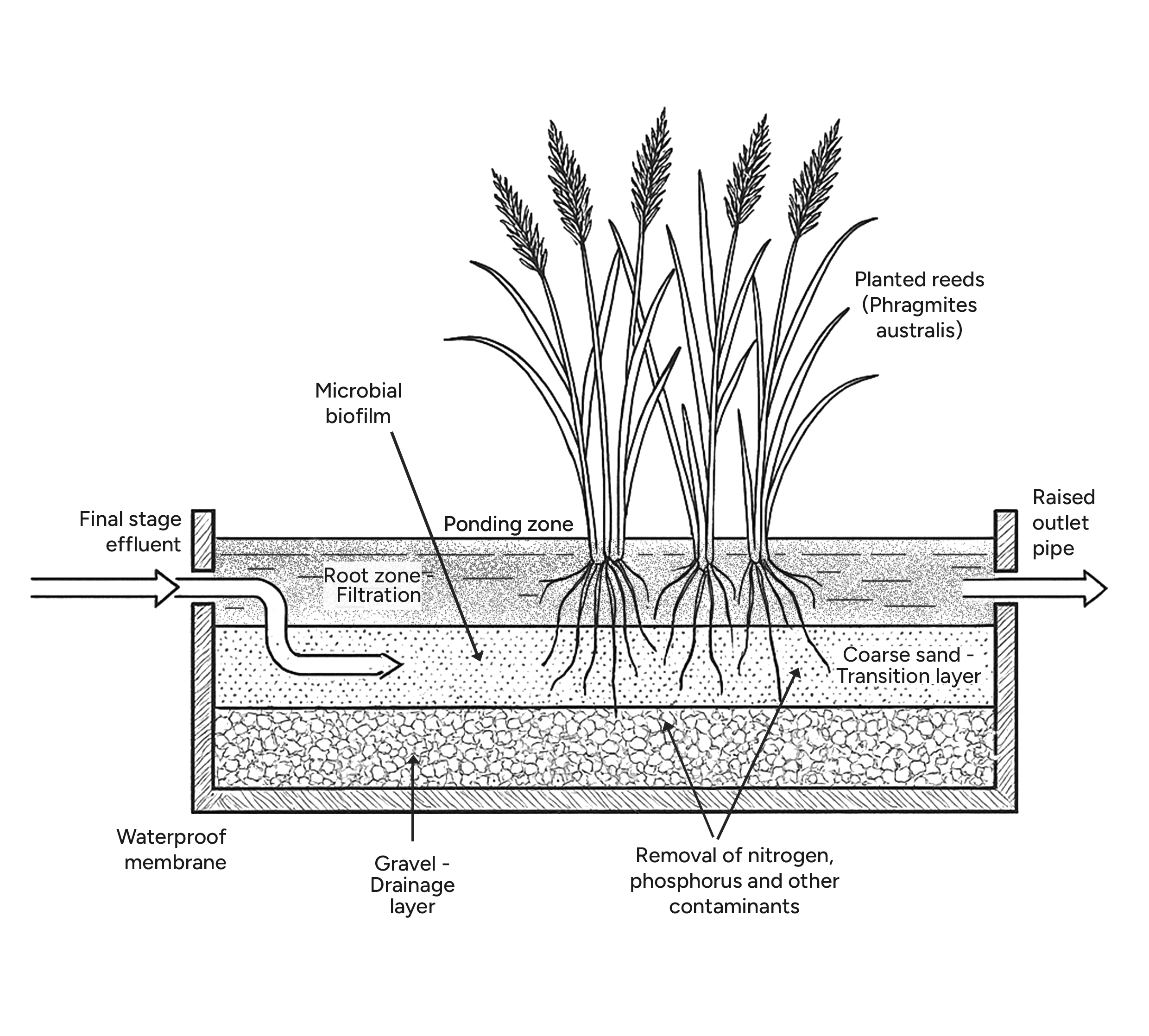
When wastewater flows through the bed, the reed plants, together with their surrounding microbial and abiotic ecosystems, break down and absorb pollutants such as pathogens, organic matter and excess macronutrients. ‘Polished’ water is then collected by outlet pipes to be discharged into a watercourse. The mechanisms by which reedbeds purify wastewater include physical actions such as sedimentation and filtration, biological processes like microbial degradation and oxygenation, and complex chemical interactions that involve the adsorption of nutrients and metals onto substrate particles.
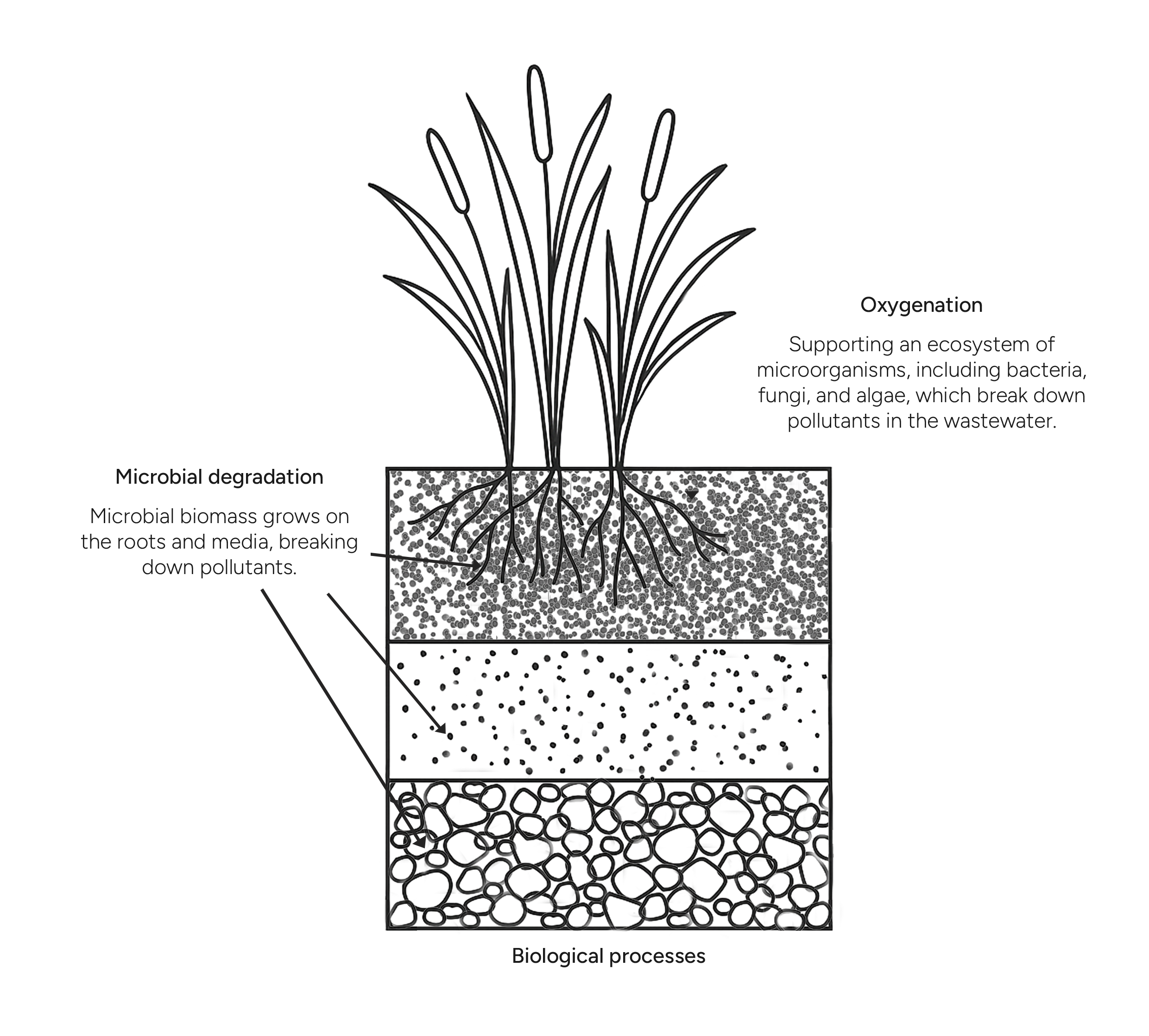
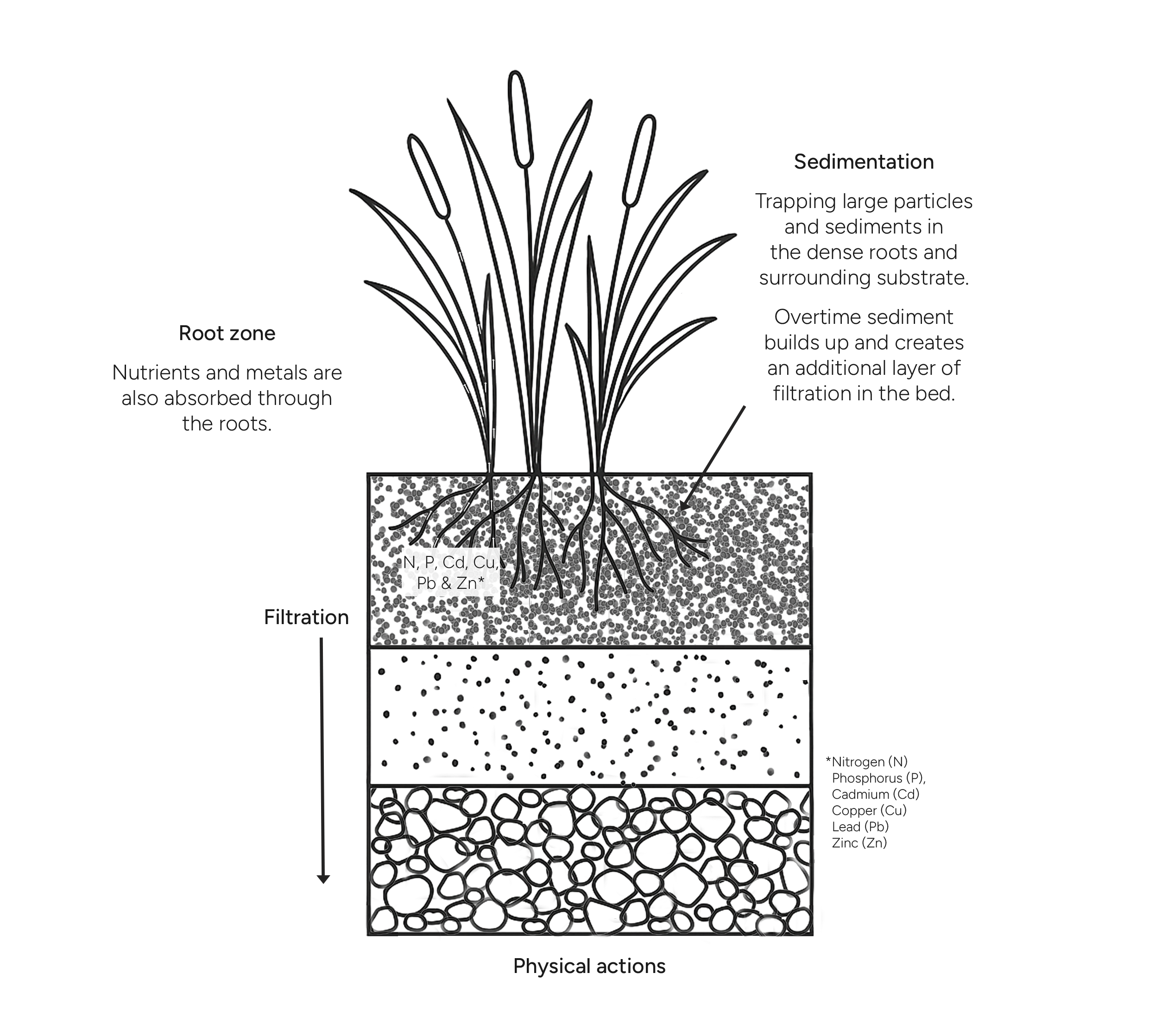
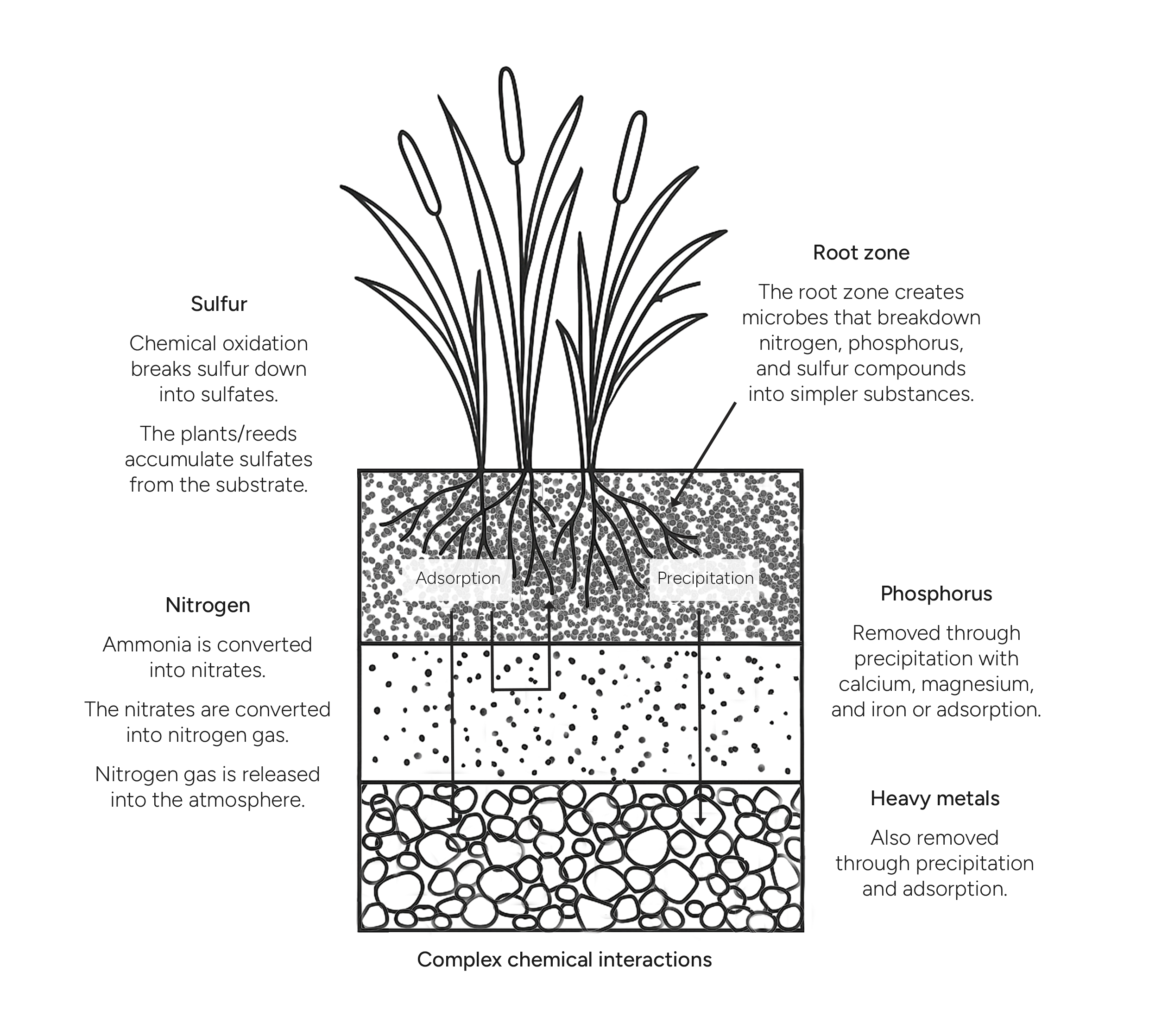
Flood alleviation: Preventing overspills
In addition to providing a viable wastewater treatment option, reedbeds play a key role as natural drainage systems, preventing excess rainfall from overwhelming the sewerage network. By doing this, they help prevent system overloads and reduce the risk of storm overflows.
While reedbeds are not a replacement for stormwater storage and treatment, installing reedbeds on wastewater treatment sites can provide a ‘buffer zone’ to retain stormwater overspills and reduce their environmental impact.
In rural and urban areas, reedbeds help alleviate flooding by holding excess rainwater within the catchment and slowing the flow of surface water into watercourses. Acting as water storage basins, they attenuate peak flows, helping to prevent flash floods in rivers and streams. These benefits make reedbeds valuable not only for wastewater management but also in climate resilience strategies.
When integrated into broader green infrastructure, reedbeds form a key component of sustainable urban drainage systems (SuDS). When installed in nature areas and around wetlands and ponds, they allow water to slowly percolate into the ground, reducing surface runoff and mitigating the risks associated with heavy rainfall events.
Constructing reedbed systems
As long as there is sufficient space, reedbeds provide natural flood management within the wider catchment and effective tertiary treatment on a range of wastewater processing sites. Their construction is relatively simple, requiring only earthworks and imported gravel, with the addition of a lining and inlet and outlet pipework when used on wastewater treatment sites. The size and number of beds depend on the volume of water they are expected to hold or the type of effluent they are expected to process.
In catchment projects, reedbeds are excavated, filled with gravel and planted, allowing them to naturally attenuate water as it is received from rainfall or nearby watercourses. For wastewater processing applications, the construction process is more complex. Once the flow type is determined (horizontal, vertical or hybrid flow), a shallow basin is excavated and lined with an impermeable membrane, such as HDPE, to prevent groundwater contamination.
The drainage matrix of the reedbed is composed of layers containing nitrifying bacteria. The first layer consists of coarse gravel to aid drainage, the middle layer is made up of fine gravel or sand to filter solids and support the root system. The reeds are planted into a final top layer of sand or fine gravel.
An inlet pipework system is installed to facilitate effluent dosing, ensuring an even distribution of water throughout the beds. Perforated outlet pipes are usually set within the gravel base layer to collect treated water for discharge.
Juvenile reed plants (typically Phragmites spp.) are planted by hand. Several weeks to months should be allowed for root system establishment before full loading with effluent. Once established, reedbeds provide long-lasting wastewater purification. To ensure their continued efficacy, they should be maintained annually by removing decayed plant matter and servicing pipework.
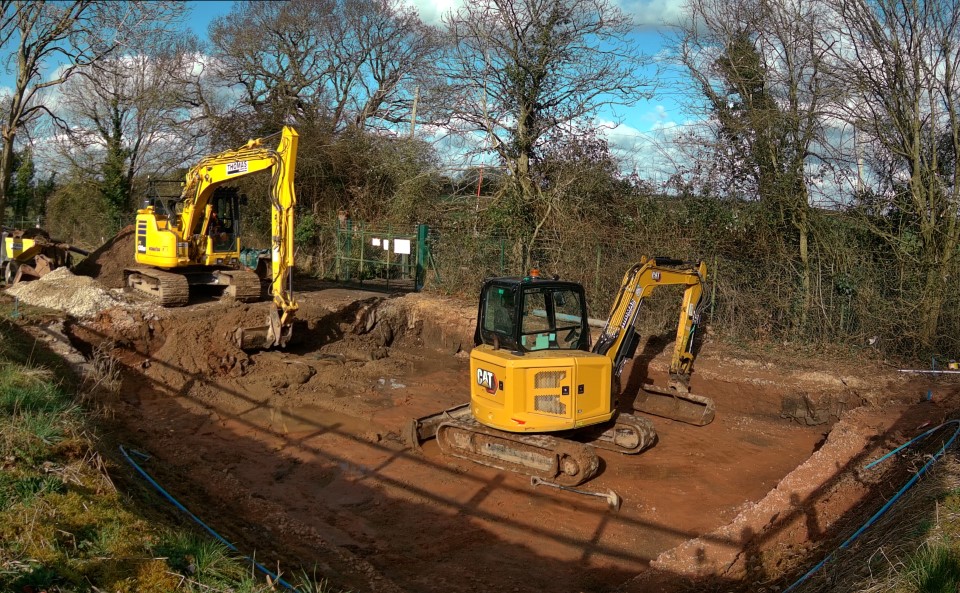
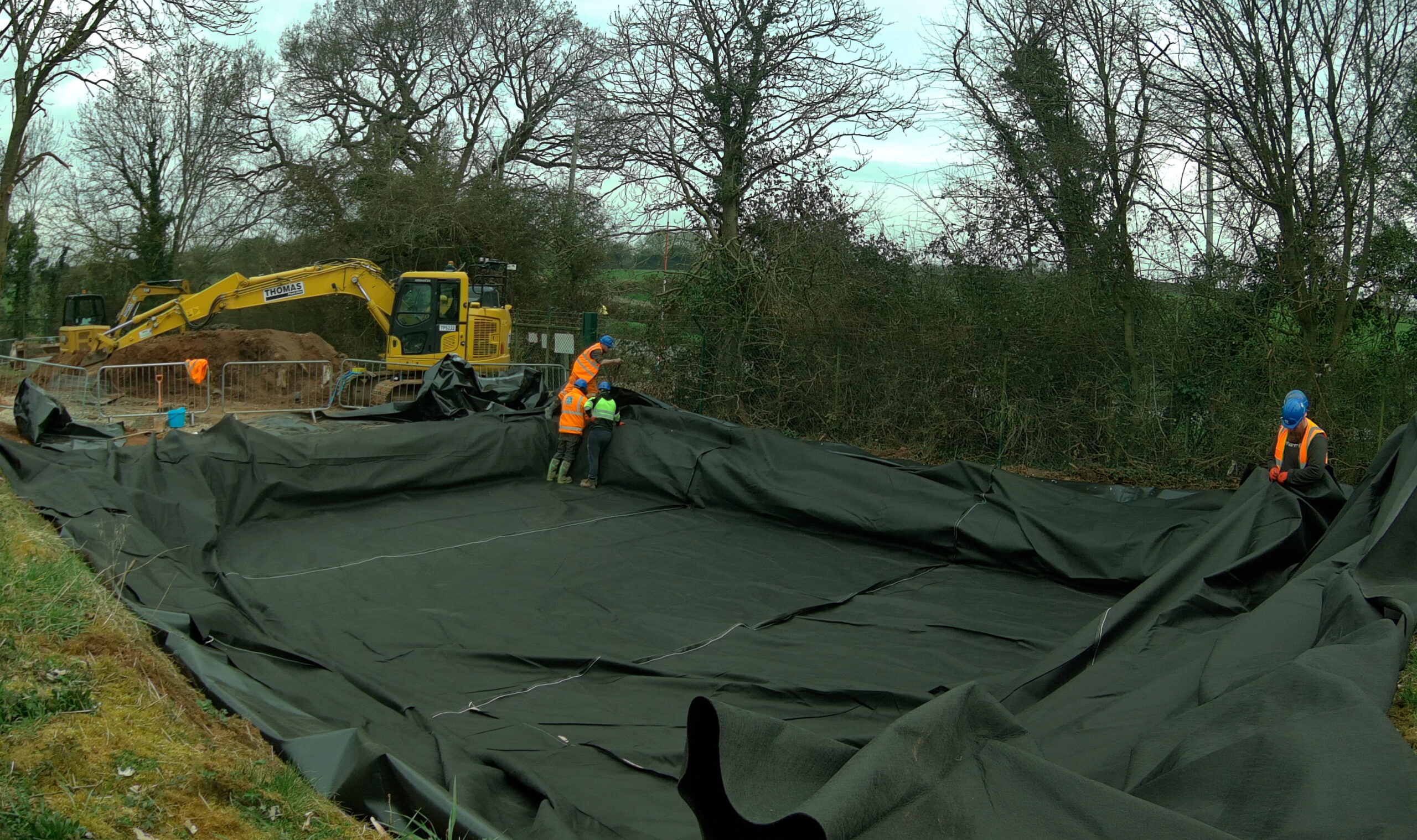

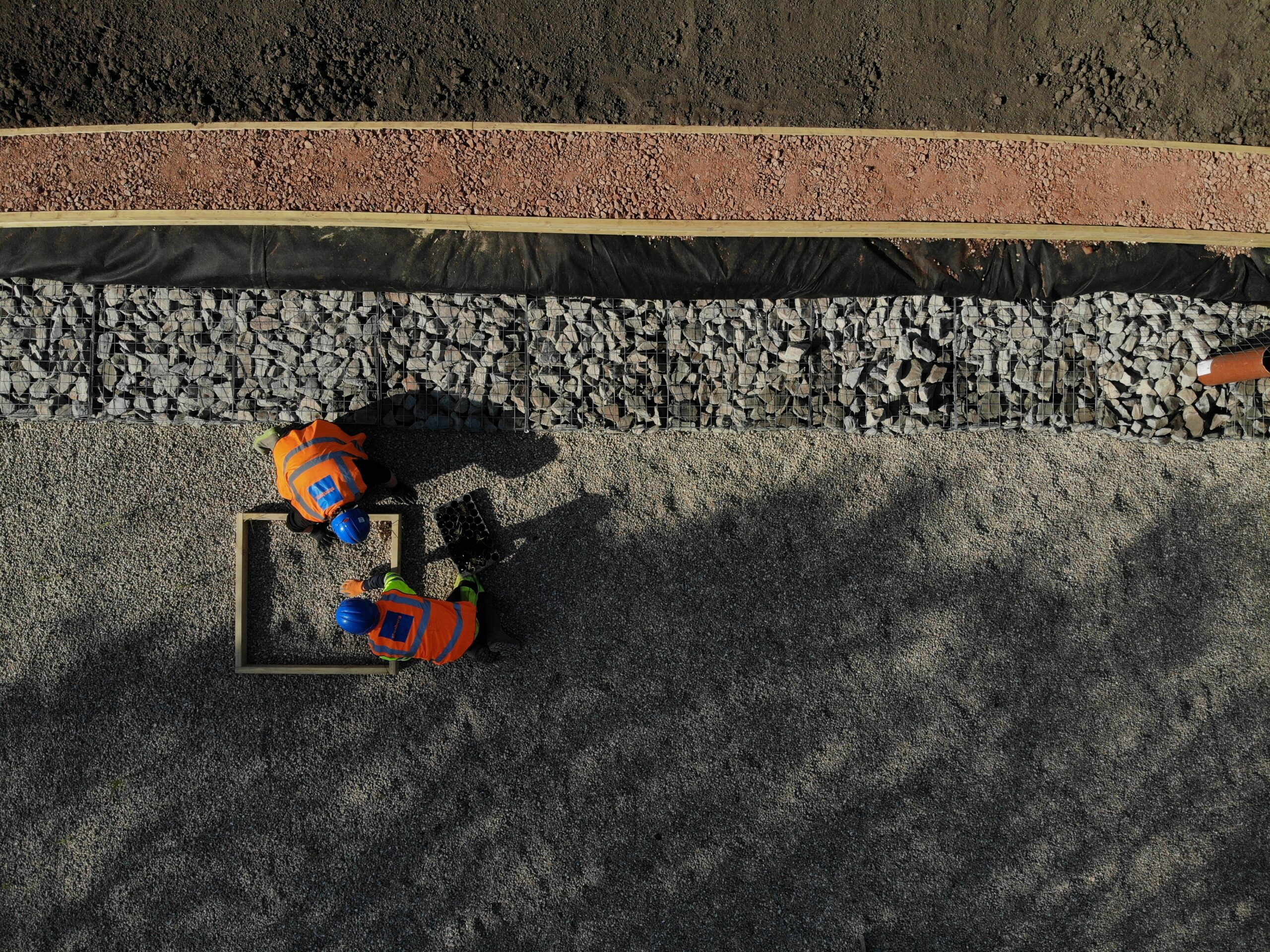
Adapting reedbeds for purpose
Reedbeds differ according to their structure, hydrology, and ecological function. Natural reedbeds form in shallow freshwater or brackish water bodies such as lake margins, river floodplains, and estuarine wetlands. Constructed reedbeds, designed to mimic natural ones, are created for conservation, flood management or water treatment purposes.
For natural flood management, reedbeds are often installed as part of larger wetlands in suitable areas such as floodplains, river valleys, and low-lying farmland. For sustainable urban drainage systems (SuDS), reedbeds can be integrated into parks and green corridors where they help prevent flooding and provide recreational value. In these applications, a mixed layout of reeds, sedges, rushes and areas of open water contributes significantly to biodiversity.
The two most common types of reedbed for wastewater treatment are horizontal flow, where water flows through the bed, and vertical flow, where water is intermittently dosed from the top and percolates vertically. Horizontal beds are typically anaerobic and full of water at all times. Vertical flow types are designed to work in aerobic conditions to nitrify ammonia. Hybrid systems combine both for greater efficiency.
Horizontal flow reedbeds have the advantage of being uncomplicated in design and are highly effective at removing organic matter and suspended solids; however, they are less effective at nitrification (ammonia removal), as oxygen transfer is lower when compared to vertical reedbeds. Hybrid systems, while more complex to install and maintain, combine the benefits of both horizontal and vertical reedbeds, enabling them to tackle higher volumes of waste, including both organic pollutants and nutrients such as nitrogen. In some cases, free-water surface reedbeds are installed that are designed to mimic natural reedbeds with the surface water exposed.
Planting for performance: Key plant species
Typical plants used in the construction of reedbeds are common reed (Phragmites australis), bulrush (Schoenoplectus spp.), and cattails (Typha spp.). All these plants aid oxygen transfer to the rhizome, promoting microbial activity that breaks down and digests contaminants.
Common reed is a fast-growing plant with a wide tolerance for various conditions. It exhibits excellent oxygen transfer through roots and supports microbial breakdown of pollutants, making it a suitable choice for most applications. Cattails, however, have dense root systems and are therefore especially suited to purifying nitrogen and phosphorus, making them an appropriate option for neutralising agricultural runoff. Bullrush is excellent at trapping sediments in tertiary, ‘polishing’ stages.
All species are capable of tolerating being flooded and supporting high levels of biodiversity – both important functions of reedbeds. By selecting the appropriate reedbed type and plant species, systems can be tailored to local conditions and goals, improving their efficiency and ecological value.
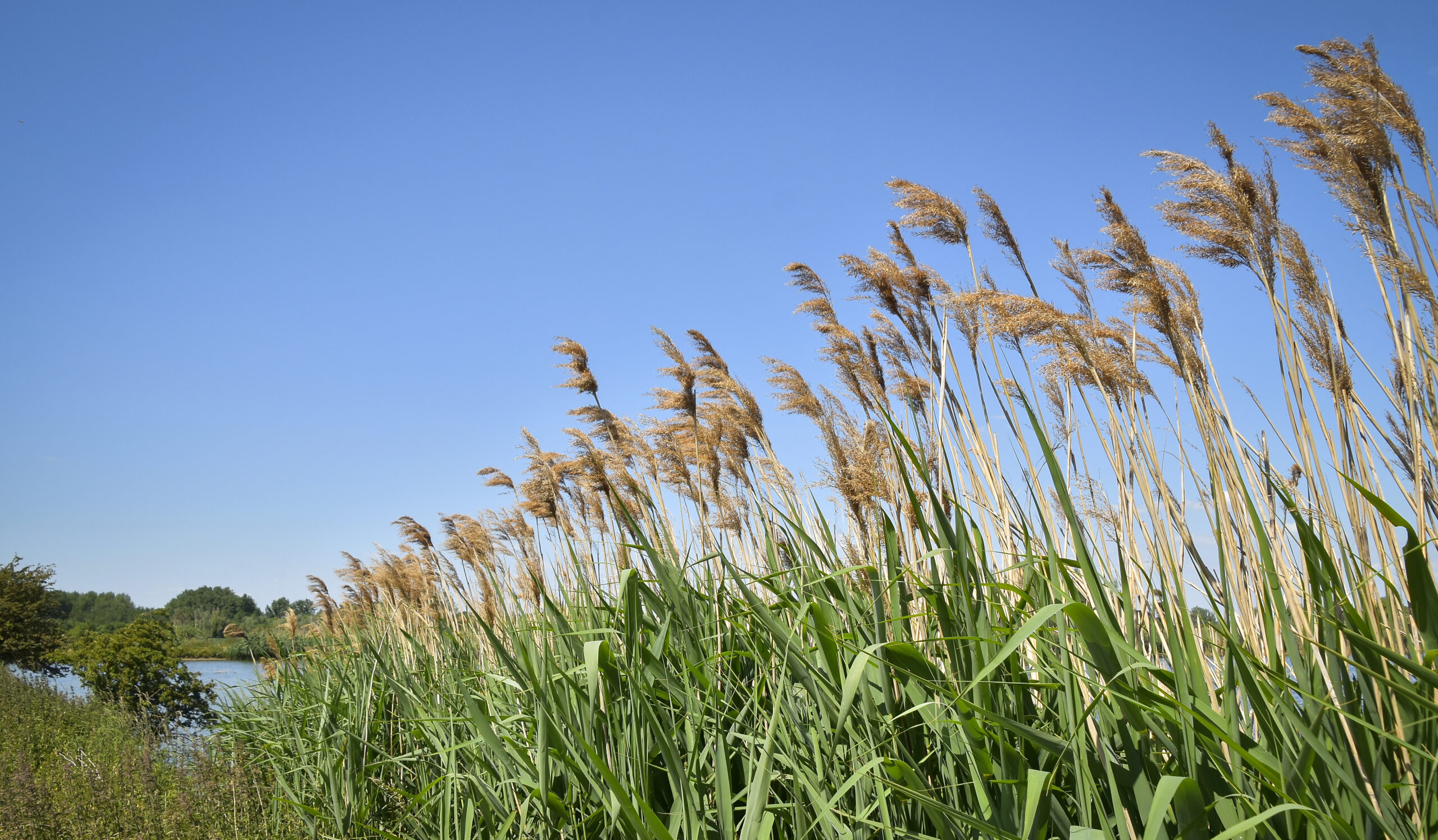
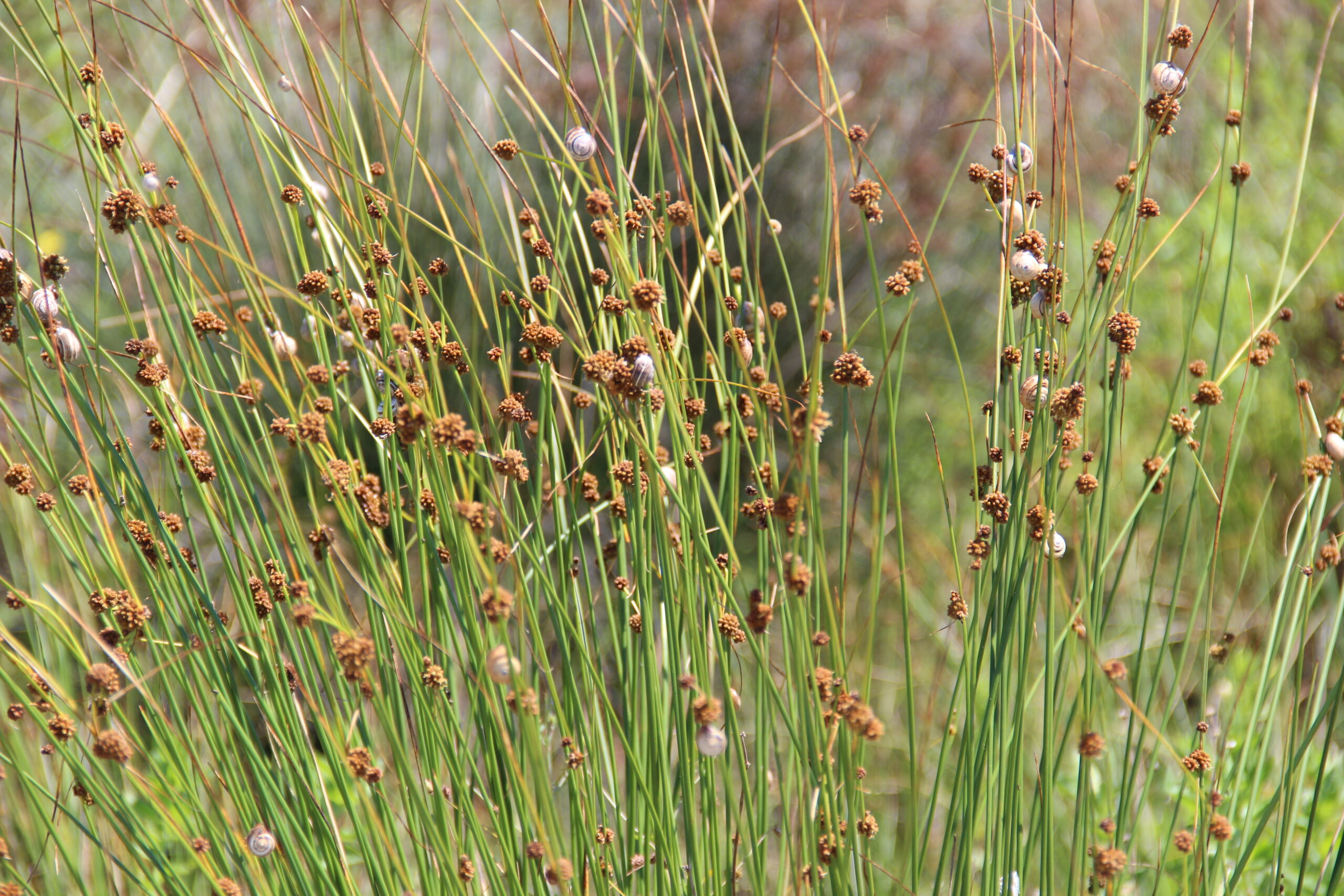
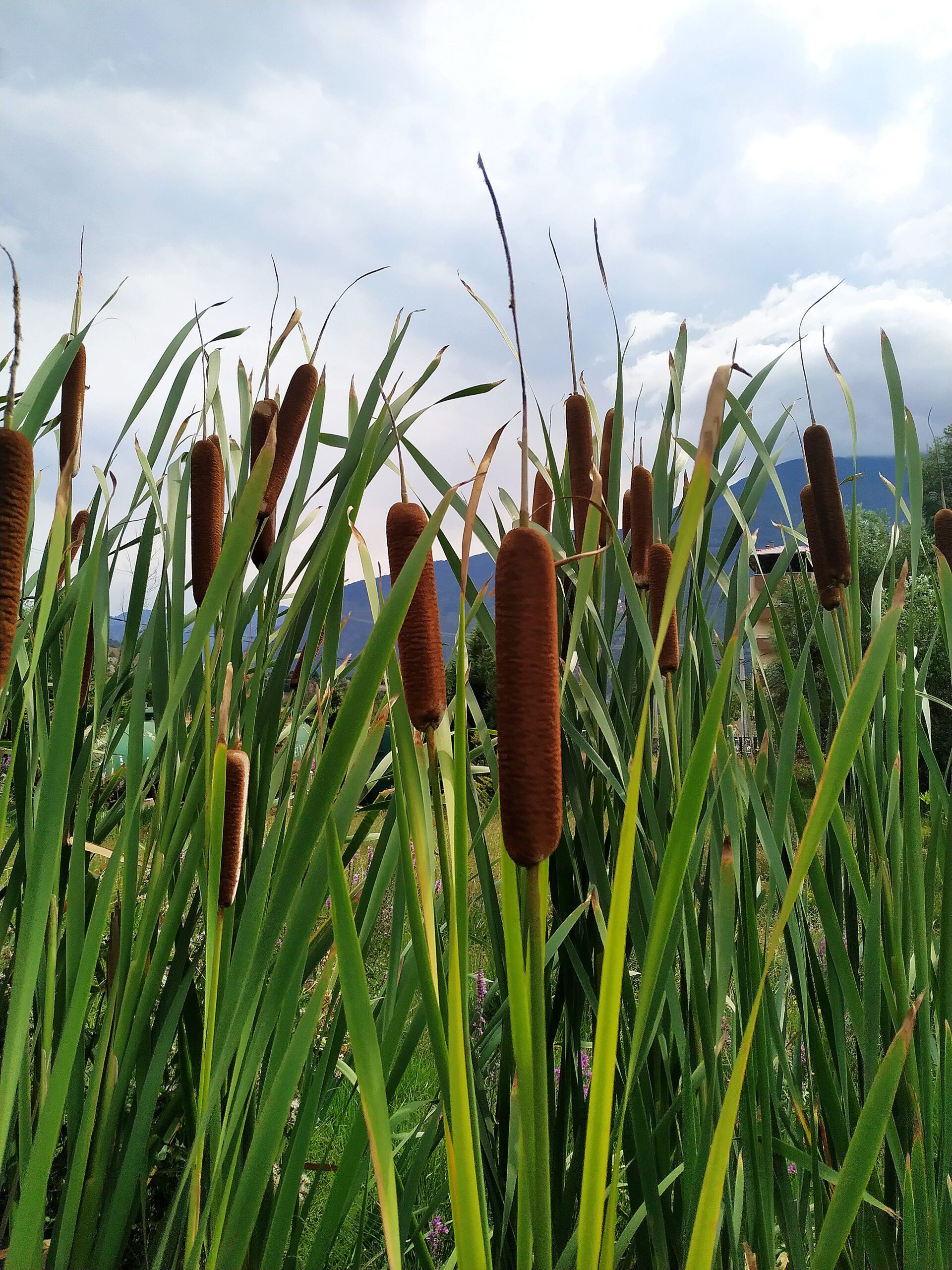
The importance of reedbeds for the environment & carbon reduction
Reedbeds provide far-reaching environmental benefits. They improve water quality, acting as carbon sinks by sequestering carbon from the atmosphere and storing it in their living biomass and the soil, and supporting biodiversity by providing valuable habitats for a wide variety of species including birds, insects and aquatic life. Additionally, reedbeds bring wider benefits to society and the economy, providing recreational areas for birdwatchers, walkers and tourists.
Utilising reedbeds as an eco-friendly tertiary wastewater treatment option offers several environmental advantages over traditional built sewage treatment, especially as the pressures of climate change and population growth increase. Reedbeds have a significantly lower carbon footprint compared to conventional wastewater treatment infrastructure, both in the construction phase and during their operational lifespan. Materials such as sand and gravel have a much lower level of embedded carbon than concrete. They are designed to operate using gravity flow, therefore negating the need for energy-intensive pumping systems and eliminating the need for regular cleaning and maintenance. Additionally, by providing natural filtration, they eliminate the use of chemical treatments to neutralise contaminants.
The future of reedbeds
As the water industry faces growing pressure to find alternatives to traditional wastewater infrastructure, reedbeds are expected to play an increasingly important role in sustainable wastewater treatment and climate resilience strategies. As climate change and water scarcity drive demand for regenerative water systems, reedbeds offer a model of bio-mimicry – managing waste and alleviating flooding while restoring and strengthening ecosystems.
Future innovations may optimise plant species, invent new layering systems, and develop reedbeds to better target newer pollutants in wastewater such as pharmaceuticals, microplastics, pesticides and heavy metals. Advancements may also include the development of salt-tolerant species to address waste concerns in coastal areas and protect against seawater intrusion.
Progress in reedbed maintenance may include the installation of smart sensors for real-time monitoring to track water quality, nutrient levels, flow rates and plant health. Another sustainability development is the recycling reedbed waste for the biochar industry. Instead of disposing of organic debris during maintenance regimes, it is converted to biochar through pyrolysis – a process that heats the material in the absence of oxygen – enabling industries to use the organic waste sustainably and contribute to a circular economy.
Future innovations would enable reedbeds to meet growing demands, from wastewater treatment and flood control to carbon sequestration and biodiversity preservation. Developments could see reedbeds used within a variety of habitats including peatland ecosystems and urban landscapes, making them multi-functional systems that address a wide range of environmental challenges.
Conclusion
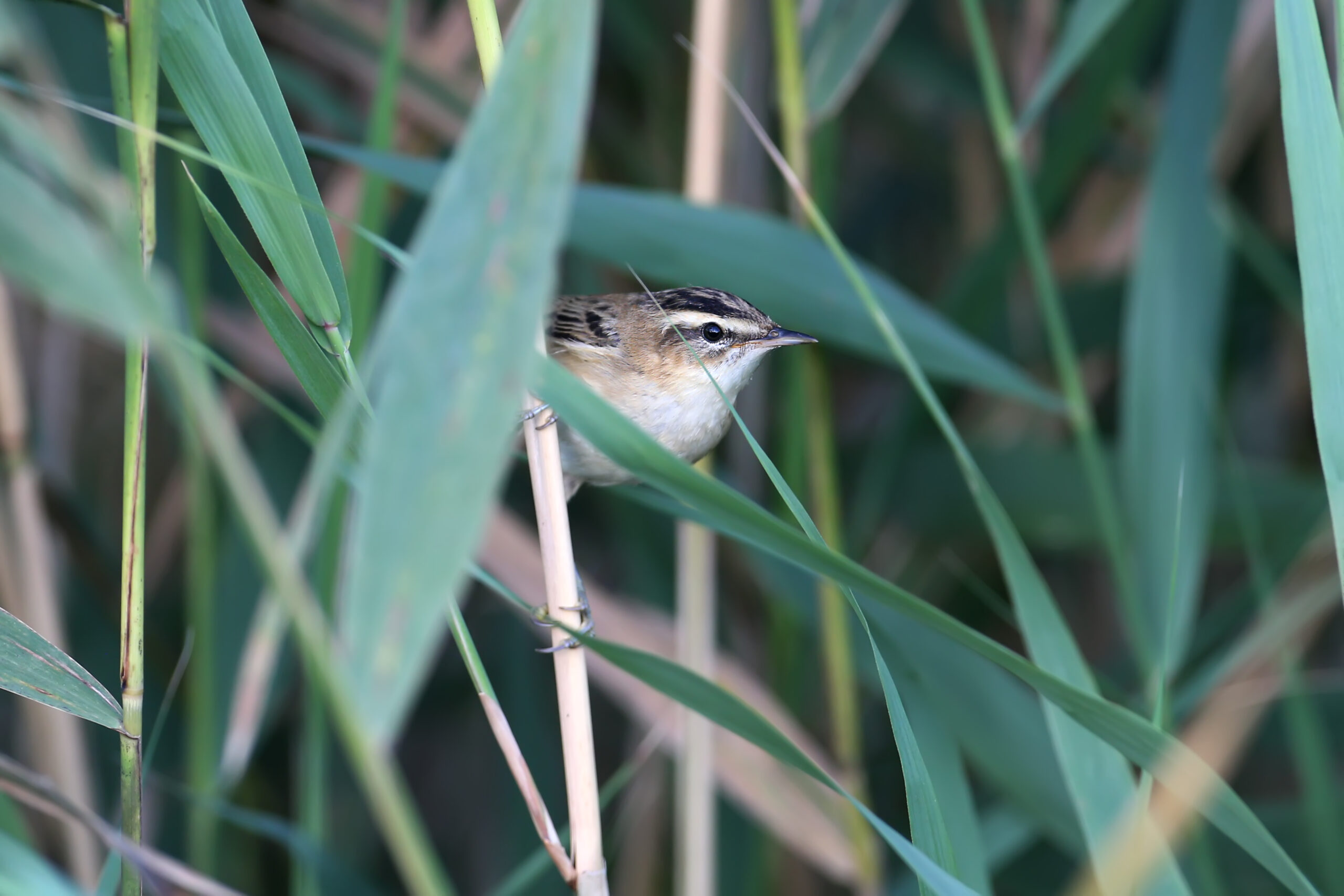
Reedbeds offer a sustainable and cost-effective solution for addressing contemporary environmental challenges including flood management, wastewater treatment, and habitat restoration. Their natural water storage and filtration abilities not only reduce flooding and improve water quality but also enhance biodiversity and landscape value. As environmental regulations tighten and the demand for green infrastructure grows, reedbed systems present a compelling alternative to conventional treatment technologies. Continued research, collaboration and policy support will be essential to unlocking their full potential and securing their successful integration into future environmental management strategies.
